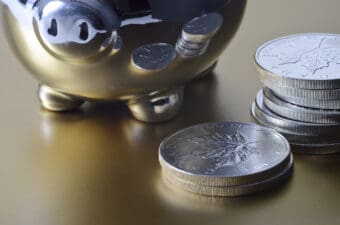Keyera Corp. (TSX:KEY), one of the largest independent natural gas and natural gas liquids midstream companies in Western Canada, announced first-quarter earnings after the market closed on May 5, and its stock has responded by falling over 3%. Let’s break down the quarterly results to determine if we should consider using this weakness as a long-term buying opportunity, or a warning sign to avoid the stock for the time being.
A quarter of year-over-year declines
Here’s a summary of Keyera’s first-quarter earnings results compared with its results in the same period a year ago.
| Metric | Q1 2015 | Q1 2014 |
| Earnings Per Share | $0.33 | $0.35 |
| Operating Revenues | $644.99 million | $951.48 million |
Source: Keyera Corp.
Keyera’s earnings per share decreased 5.7% and its revenue decreased 32.2% compared with the first quarter of fiscal 2014. The company’s slight decline in earnings per share can be attributed to its weighted average number of diluted shares outstanding increasing 6.5% to 168.92 million, which more than offset the positive impact of its net income increasing 2.4% to $56.58 million. Its steep decline in operating revenue can be attributed to its revenues decreasing 38.5% to $517.07 million in its Market segment, led lower by the steep decline in commodity prices over the last year.
Here’s a quick breakdown of 10 other notable statistics and updates from the report compared with the year-ago period:
- Sales volume increased 20% to 119,300 barrels per day
- Gross processing throughput volume increased 12.7% to 1.53 trillion cubic feet per day in its Gathering & Processing segment
- Gross processing throughput volume increased 4.9% to 128,000 barrels per day in its NGL Infrastructure segment
- Cash flow from operating activities increased 132.3% to $277.56 million
- Adjusted earnings before interest, taxes, depreciation, and amortization (EBITDA) increased 71.2% to $184.51 million
- Operating profit increased 21.6% to $154.05 million
- Distributable cash flow increased 78.7% to $139.79 million
- Distributable cash flow increased 69.4% to $0.83 per share
- Paid out dividends totaling $55.77 million, or $0.33 per share, compared with dividends totaling $47.61 million, or $0.30 per share, in the year-ago period
- Net debt increased 44.7% to $1.36 billion
Keyera also announced that it will be maintaining its quarterly dividend of $0.115 per share, and the next payment will come on June 15 to shareholders of record at the close of business on May 25.
Should you add Keyera to your portfolio today?
It was a fairly weak first quarter for Keyera, so I think the decline in its stock is warranted. However, I think investors should consider using the weakness as a long-term buying opportunity because the stock trades at favourable forward valuations and because it has a high dividend yield.
First, Keyera’s stock trades at just 24.3 times fiscal 2015’s estimated earnings per share of $1.74 and only 22.8 times fiscal 2016’s estimated earnings per share of $1.85, both of which are very inexpensive compared with its five-year average price-to-earnings multiple of 28.
Second, Keyera pays an annual dividend of $1.38 per share, which gives its stock a 3.3% yield at today’s levels. The company has also increased its dividend for 13 consecutive years, making it one of the top dividend-growth plays in the energy sector today.
With all of the information provided above in mind, I think Keyera represents one of the best long-term investment opportunities in the natural gas industry today. All Foolish investors should take a closer look and consider using the post-earnings weakness to begin scaling in to long-term positions.







